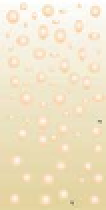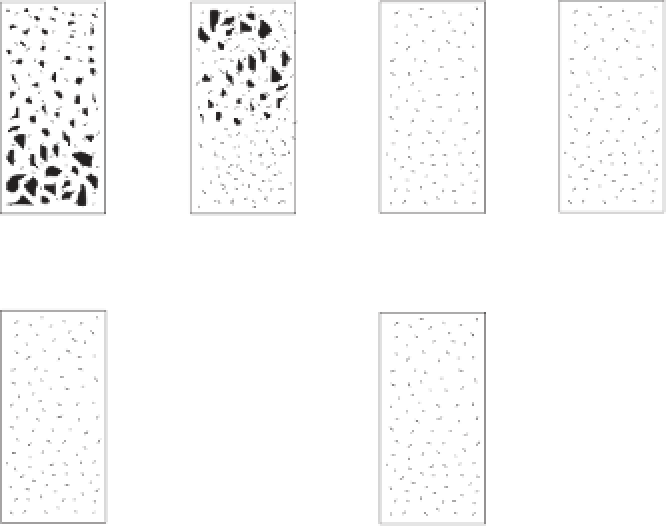Geology Reference
In-Depth Information
(b)
(c)
(d)
(a)
Reverse grading
Normal grading
Symmetric grading
(reverse to normal)
Symmetric grading
(normal to reverse)
(e)
(f)
(g)
(h)
Density grading
(normal for lithics,
none for pumice)
Subaerial environment
Density grading
(normal for lithics,
reverse for pumice)
Subaqueous environment
Multiple normal
grading
Multiple reverse
grading
Figure 5.5
Different styles of grading as seen in ignimbrite deposits.
5.1.3 Textures
The textures that are found in pyroclastic rocks are wide and varied, due to the
varied size range (huge blocks to very fine ash), density variations in the clast
population (for example, pumice vs lith fragments) and the differing current
regimes that can deposit the units (for example, fall out, high and low density
pyroclastic flows, and so on). Many of the standard sedimentary structures and
textures associated with the emplacement of turbidites-debris flows-grain flows
are of importance (for example, tractional and grading structures - as above;
see also Tucker, this topic series), and it is important to note the specific rock
texture in terms of the grain size (Table 5.1), grain size sorting (Figure 5.9) and
the modal abundance of the key fragments. Additionally there are a number of
specific textures that may be found in only pyroclastic units which include:
1. Accretionary lapilli (Figure 5.10), which are small spheres found in both
fall and flow deposits, varying in size from 1 mm to several centimetres, but



























































